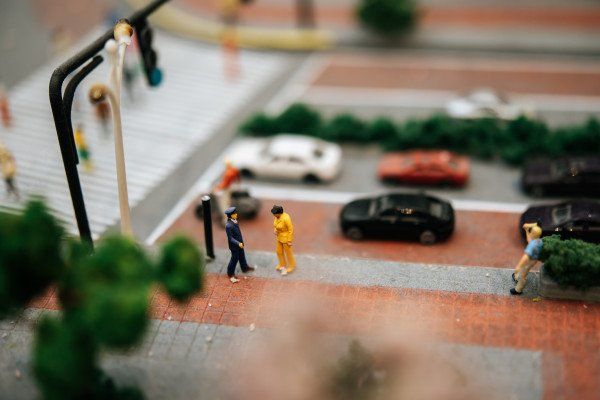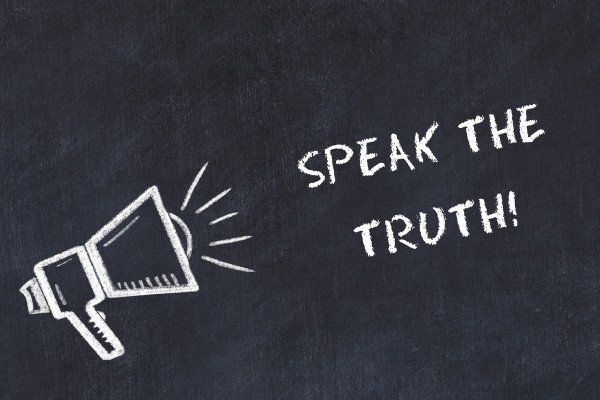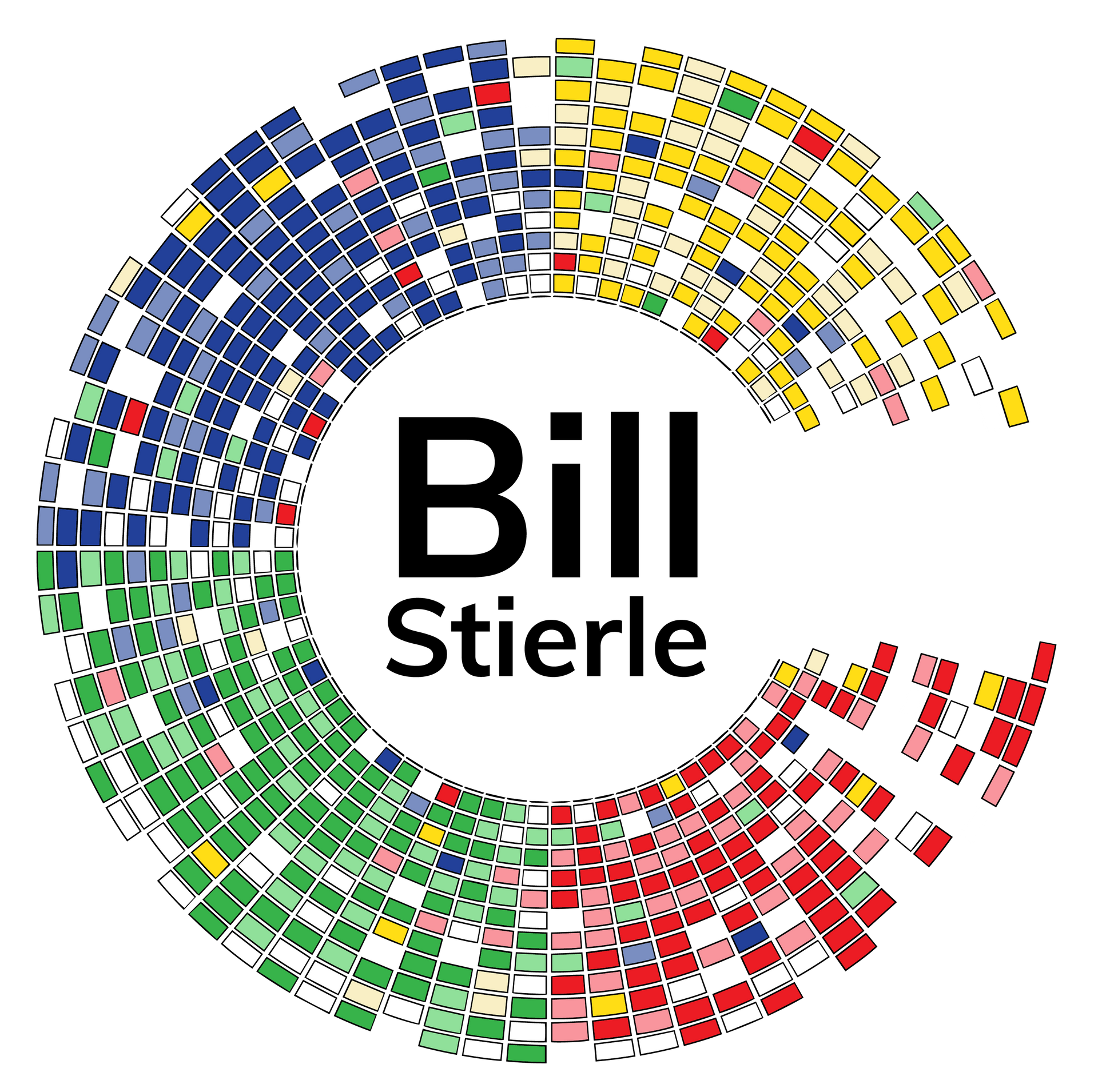Truth And Police Perspective: The Aurora, Colorado Racial Profiling Incident
Subscribe Today!
From the police’s perspective, police rules, protocols and procedures are there so that the need for safety and protection of police officers and the need to respect the rights of the community are both ensured. What happens when there is a clash between the supposed need for safety and protection and the right to freedom and presumption of innocence? Bill Stierle and Tom take the recent incident of racial profiling in Aurora, Colorado as an example of how tricky this question can become. Up to what point should rules and procedures be followed strictly? Does the need for safety and protection justify the clear violation of the apprehended persons’ rights? What changes can be done to train police officers to respond to these situations better? These are difficult but necessary questions to tackle as America’s police find itself once more in the spotlight
---
Watch the episode here
Bill, I felt like should we talk about this subject or should we not? It’s something we’ve covered before. It’s so in our faces as a nation in our heightened state of awareness for any racial injustice and all the protests in the wake of George Floyd’s death and other things that I feel like we have to talk about it. How do you feel? We’re talking about the incident in Aurora, Colorado, where this family was stopped in their vehicle because the police suspected that it was stolen and the treatment of that family in the process. It’s horrific what took place.
I feel sad and disheartened as most people who watched the video, even shocked and unsettled. We could empathize with how terrified the family felt while being treated and asked to do the things they were doing. The sadness and the frustration, all our emotions get mixed up around this because many of our needs are not being met by this experience. No one wants to see it. No one wants to live through it. The police officers don’t want to deal with it later, yet regrettably, they’re being trained or being focused or being amped up in this way in order for them to follow the rules and guidelines of this type of arrest. None of those things justifies what we observed. It’s exasperating and that you can sense the exasperations of my voice. Can the police have perspective?
Not if they’re following the rule or procedure. They’re getting pinned between here’s what’s written as the rule and here’s where you need to have better judgment about things. Here’s where you do a better job of checking in. Yes, protect yourself and approach the thing in a safe and cautious way, but also have this other perspective thing that goes on that you can say. As a person that’s not a police officer that does face these kinds of situations daily, twice a day, three times a day in an escalated position. I’m not going to necessarily know what the physiology is inside that police officer on a day-to-day basis and the mental health of the police officer to follow the rule and/or protect and serve the way they’ve been trained to protect and serve. Getting off the monologue, you can see this show is about perspective. The police perspective, the citizens’ perspective and the larger is the national perspective and vision to have a police force that does things on a local level that we all can trust. It took me a while to get there because there’s so much foundation I need to lay down like we want police to do something but not this thing.
The thing is as individual citizens and certainly me and my wife in the evening news watching the report, for those of you that may not be fully aware of what took place, I’ll briefly try to recap. This was a family in an SUV that was driving and the police had a report that it may have been stolen. They intercepted the vehicle, many officers, many police cars. They all draw their guns on the car and force everybody out of the car. There are four children from ages 6 to 17 years old. They handcuffed two of them. They make all of them lie down on the hot pavement. This is Aurora, Colorado in the summer. It’s pretty darn hot pavement.
The way that they were treated was shocking to those of us that are citizens viewing this on the news that have no awareness of police policies and how they might approach things like this. We’re like, “Is this appropriate?” We were all shocked and saddened. It brought my wife and me to tears seeing what they were doing because we have a six-year-old child. What they did to that six-year-old child will traumatize her I’m sure for a very long time, if not for life. The proportionality of it and the appropriateness of it escaped us as we first saw this. It’s like, who thinks this is reasonable?
That’s the hard part about this, Tom, because you and your wife sitting on that couch is going to feel helpless, shock and exasperated. The hard part about it is you’re seeing it. The level of shock is elevated because it’s all in the national narrative. For any African-American that’s watching this, they’ve got ten stories of friends or people that they know that have been treated like this that never made a video newscast like this. It brings up the other things like wait a minute, the over-reaction is something that we’re becoming familiar with the helplessness and the exasperation that they have felt for years having to talk to their kids about, “There’s this dangerous thing out there called police and police perspective.” It’s a head-shaker because they have to tell the story of violence before it happens to warn their kids. If the story is not told that way, it’s dangerous for them. My voice squeaks up there because that’s the exasperation feeling out around things like safety, integrity, and what do we stand for as a nation, for policing. What do police protocols look like? What does police training look like? What’s the difference between a war zone and a city? What’s the difference?
There are some big differences. That’s a great point, Bill. It certainly appears to me from my perspective and admittedly, that’s only one perspective that wouldn’t it be great if the police could get some more training to be able to make a different judgment call at the moment, depending on the circumstances and not approach everything from a strict rule’s perspective. We can all understand more that police are trained to follow rules strictly.
They are. The rule is to set up sequential steps to do a design for protection and safety for the police officers. We want the need for safety and protection to be met for the police officers, then life has variables in it. It’s a weird thing to say but life has variables in it. If this narrative goes like, “We need to understand the police perspective, an African-American that’s reading this is going, “How about our perspective?” That’s what you and I are talking about. How about their perspective if they’re not being treated equally with equanimity, fairness, assumption of innocence? There’s got to be the person you’re pulling over is assumed to be innocent until they’re in the court of law.
The need for safety and protection has a range that it goes to. Training police officers to have an emotional range is something that’s important. There’s also, what is it like to be in that position and going like, “I need to use my words and I need to talk through this?” That’s what our nation is about. It’s being able to allow freedom of expression and provide this next level. Otherwise, what winds up happening is that these things don’t rise to this. The cell phone and putting a camera in everyone’s hand in the United States has illuminated and brought forward these rules, guidelines and policies where the need for safety and protection is being met for the police officers, but at the expense of freedom and the presumption of innocence. We’ve got a little bit of work there to do to adjust both of our perspectives.
That’s a tricky needle to thread. If you’re the police and especially if you are a police chief in charge of all of these officers and you’re training them to do their jobs to protect themselves, we’ve also got to train them to be protecting the citizens and mindful of these things. That’s a very tricky situation. One of the things that’s in this video report is that the police chief in Aurora has only been on the job for seven months. Remember that there was another incident with another person who died after being arrested by the police. I forget his name but it’s mentioned in the video, after being injected with ketamine and then hospitalized. It was terribly tragic. There’s no reason for that person to die.
The police chief back then had resigned or been fired. This police chief has been on the job for seven months. Her name is Vanessa Wilson. She issued a video apology for the treatment of this family. To her credit, she recognized that the standing policy, the rule for how to approach stolen vehicle report or a call needs to be reviewed and revised because clearly, she admitted that the treatment of the family was out of proportion or not appropriate given the circumstances, however you want to say it. While I’m glad she did that, and she has a tough job because imagine how every police chief across the country, when they saw this news report is like, “No, just what we don’t need.”
It’s going to be, “Not again.” It’s not like this is going away. We’re getting one of these things a month, every two months. We also got to do a better job from our approach to how we clean these things up. The police chief offered to pay for their therapy. I don’t think I’ve ever seen that ever before on camera. The police says, “We’re going to make reparations for this.” That’s what reparation is. We did something wrong. We are going to restore something. This is the best we can do to clean this one up. There are other restorative elements. The restorative element of this is when you get to face the person that did something to you. It’s not to let them know how terrified you were to build up that sensitivity. It’s not to make you feel bad but to get a sense that we were terrified. We are talking through this, how terrified we were. This did not go well for us. This is what was happening to us. We were joyous in a car driving to get a spa day to get our nails done. They were going for a moment of restoration and self-care, and then they get this inserted in that.
Those children are going to be afraid to ever get in the car to drive anywhere again for a long time.
Our human body is very soft. We are very sensitive. We’re not like, “Put it in the past or our bad.” This is not that level of our bad. This is 8, 9, 10, terrible. This is not 1, 2, 3. It’s a disappointment. This is not a disappointment. This is not a level-five. This is a level 8, 9, and 10 clean up. You’ve got to clean up the mess. Our society now has moved to when something like this happens, we’re not getting your attention at 8, 9 and 10. You’re treating this as a 2, 4 or 5. “I’m going to burn down your police station so you see how bad this is.”
Wouldn't it be great if the police are trained to be able to make judgment calls at the moment instead of just strictly following rules?
CLICK TO TWEET
The media is not getting the perspective about how bad it is. It’s this bad, everybody. The police station being burned down is about the level of trauma and violence that has happened to us, our community, because of our race. That’s the way we’ve got to think about this police perspective. We need to think about it in that framing of things. My body is even getting worked up because it started to get the proportionality of it. I’m talking about it as if I’m them because I am them because I have the same set of needs, justice, fairness, equanimity, the presumption under the law of innocent until proven guilty.
What you and I do not have in common with these people is we are not black. We do not have that experience and perspective on a day-to-day basis.
We don’t get that day-to-day. They do.
This is speculation but I personally feel that when the police stopped this vehicle, had it been for white people in the car. I wonder if they would have approached it differently. It’s sad to say but I suspect they may not have treated those people quite the same way. It’s very disappointing.
I felt completely sad about that because you wouldn’t see that. I never see that there’s no equanimity there. We don’t see any image like that because they don’t do an image like that. The thing that I felt terrified too about it and I felt deeply sad to even talk about because this is when it becomes personal is my stepdaughter is African-American. When she tells me the stories about what people say to her and the way police treat her and things like that, I’m going like, “Really?” It’s completely out of my view.
We have no experience or perspective on that.
We’re warming up and we’re getting to a place of going like this is something that needs to be faced. The cleanup work that needs to be done is, what does safety and service to the community look like? How can the rules be written that way? How can the police get the protection that they need through the procedures that they follow? How can the return to serve and protect as a primary theme of the police departments be established? To make sure no one gets hurt along the way, both sides of the equation and things don’t get escalated. It’s a strange thing but, Tom, as you and I both have kids. We land on a very simple sentence, use your words. Use your words to talk about how upset you are. Use your words instead of managing emotions through suppression or through certain policies. This is the way to do this. This is the way people are arrested. This is the way that this is handled.
You can understand why this type of incident would enrage an entire community and that you might be concerned about them coming to burn the police station down. I do think that concern has a lot to do with why Vanessa Wilson issued that video statement, that apology and offering to pay for the family’s therapy. While those were very good steps, I still think she could have done a better job if she had some training to bring a little more empathy to the family. I’m not saying she did a horrible job. She did a great job better than most.
You’ve got a sense that she was going to do something about it. That’s called good news. The challenge is when people that are in that bubble try to fix the problem that they’re in, they’re moving some small things around instead of going, “How are we going to handle this? How are we going to train in a broader perspective so that our police officers have more tools and more skills when the moment is taking place? How does that level of training take place?” That’s the thing that’s exasperating. How does the training take place in order to make a big difference?
One other thing I want to add to this discussion is there was in the report the reason they pulled over this car. This particular car had had a stolen vehicle report once many months ago. That played into it but also the vehicle that was reported stolen was not even a car. Apparently, it was a motorcycle and it was maybe from a different state or something. There was some confusion and some error on reading the report and applying it to the wrong vehicle. The reason I mentioned this is I’m hoping the police is figuring out how to restore the situation.
Create some corrective action, new policies and procedures. Don’t focus too much on the technical error at the beginning that took place that would have prevented it all from happening. Don’t focus too much on making sure that they’re more accurate and pulling over the right car in the future because that’s not even the big issue here. The problem is what took place when they pulled over the car. Regardless of what got you to that point of pulling over the car. When you pull over the car and there’s this situation, something different needs to take place.
I’m going to spitball something here. If a police officer is walking up to that car and knowing or everybody is already on the blinders is what I call it. This is a stolen car. Therefore, there’s most likely a dangerous person in here. They are already a 5 or maybe a 7. They went stolen car, bad person. Stolen car, escalated person. The person is going to run. We’re going to go on a car chase. They’ve been polluted with their thoughts of car chases too. They’ve even been in some of them maybe. Their narrow-mindedness is going, they’re already escalated. It’s a large ask to say, “You may want to approach this at a level-two because it might be a level-two conflict.” They can’t. It’s a little hard for them to do that. They got to come in at a five, but they’re already coming in at a 6 or 7 going like, “There’s a dangerous person here possibly.” They need to protect the greater community from a car chase. Somebody else might get killed that’s innocent from this.
We weren’t there. We don’t know the whole situation, but living in greater Los Angeles as you and I do Bill, four nights a week on the 11:00 news, What do we see happening?
Helicopters. Some car is getting pulled over with somebody doing something wrong.
There is no reason to escalate the situation when whoever you’re engaging shows cooperation by stopping the car and getting out of it.
CLICK TO TWEET
It’s usually a high-speed chase. It frustrates me so much. A lot of times, I watch the evening news.
They go out nationwide.
It frustrates me because it happens too often in LA. It amazes me that there are enough people that don’t have the awareness that they’re never going to get away with the helicopters and all this. I watch the evening news either to get a little bit of the story and see what the weather is going to be the next day or something. Often, I don’t get the weather because they keep following the chase until it’s over. Here’s my point in bringing this up. Generally, I’d be interested to see the stats on this and admittedly, I’m not a police officer. I have nothing to do with law enforcement. I don’t know the actual stats. However, observationally, people that steal cars, when the police approach them, they tend to speed away and a high-speed chase ensues. They don’t tend to stop and respond appropriately to the police’s request for them to stop. That should take that 5 or 7 down to a 3 or so.
That’s a good point. The person is not. They’ve been polluted with all kinds of secondary like the car do this and you got to put the car this way and this way, how to draw the gun, don’t draw the gun. The person that gets pulled over is in a fight or flight even though maybe even doesn’t need to be if they’re getting pulled over and they’re stopping and they’re participatory. You’ve got to take them as being participatory, “Ma’am, I need to ask some questions. Would you be willing to step out of the car? I need some support from you and your cooperation would be helpful.” It’s trying to find out information, “Ma’am, is this car stolen?” Instead of, “This is a stolen car.”
If you’re getting cooperation from whoever you have engaged, pulled over, or whatever, and that first cooperation is they stopped the car. They’re not running. I’m not a police officer. I have a relative who is.
We’re talking about teaching curiosity and inquiry. These are things that I’ve trained government officials and police chiefs to do in the past. It is how to start a narrative to both meet the need for safety and protection right away. You can start a narrative, “Ma’am, I’m here to protect and serve.” Even for a criminal that will throw them off, “You’re here to protect and serve?” “Yes, I’ve got to do some protecting and some serving right now.” The person has got to go, “You’ve got to do protecting and serving. What’s that?” “It’s finding out about this and find out about that. Did you happen to steal this car or did somebody else happen to steal it and you’re just driving it?” I’m teaching the spirit of curiosity and I’m trying to do it in a light way. Some police officer or police chief is going to read this and go, “We can’t take him seriously,” but if I’m in high conflict mediation, I’m doing the same thing. I’ve got to come in and go, “This is very high conflict.” I’m going to approach it with a lot of compassionate and proactive empathy so that I don’t get caught in escalating that I’m part of the problem. I don’t want to be a part of the problem.
If everybody could approach the situation with a little bit of that perspective, it might change things. They get trained for the worst-case scenario. They have to. They get trained for protecting themselves and preparing for the worst-case scenario. That’s a fine ridge to walk on with a 2,000-foot cliff drop on either side. It’s not easy. I don’t want to be in that position. I’m not saying that makes me any authority on policing because it doesn’t. I have a relative who was talking to me about their training at the time when they were training to be a police officer. They are being trained in the procedures for pulling someone over and how to approach the vehicle. Of course, it’s also training officers in the car they pull over and such, but the police officer gets out of the car, they walk up to address the person in the car, and then the person in the car speeds away. The officer has to run back then to their car and go chase them again.
There are numerous training examples.
They are trained for what to do when people do not comply. Our thought here is that in this situation, they could have had a little perspective because the people comply.
To stick the landing on this experience because we want all our readers to know that a police perspective through training and through things, the African-American experience, as well as another person of color getting pulled over, the two of us talk about this, we cannot understand the level of repetitive stories and experiences that both the police officers have had, as well as the person of color has had. The repetitive things. That volume of things is something that needs to be worked into this conversation. That’s where the truth is. The truth is there have been repetitive experiences on both sides in regards to this.
There is disproportionality between training and experiences, between citizens and race. We’ve got to be honest about that truth. There’s no equality when you’re the person that’s having it happen to you. It is you and your community. It’s you as a police officer having had these X number of dangerous experiences happen during a week, and then tilting and having an over-reactive moment. A lot of healing needs to be done in this space for both the police and the communities. This gave us another opportunity to talk about the necessity of using communication and language to do something better.
I appreciate that, Bill. One last thing I’d like to add to that is because each of those communities, the police, and their needs for safety and protection. Their experiences being police with all the different things they experienced and then also the community of people of color and all their experiences that admittedly, we don’t have that perspective ourselves. That to me amplifies the point that maybe each of those communities could benefit from a little training and perspective on communication and language to be able to help themselves and to help each other. To me, that’s the opportunity. They’re so into it and impacted by it. They don’t have the awareness that there are these tools of using language and communication that could help each other get through this. They don’t have that awareness.
The awareness that there’s a way out. There’s more to come on this, Tom. I know that this won’t be our first rodeo on this. We’ve got to get to where we get the truth of language to work better for all of us.
Thanks, Bill.








